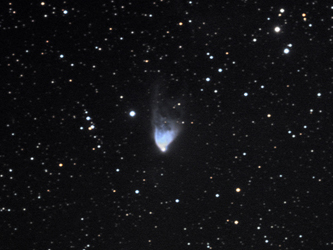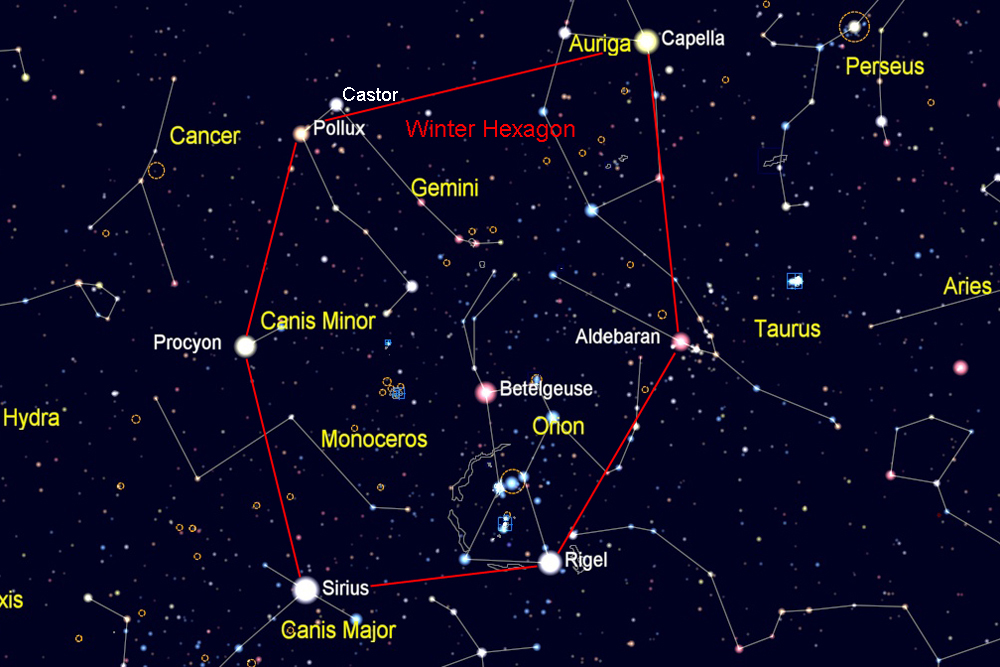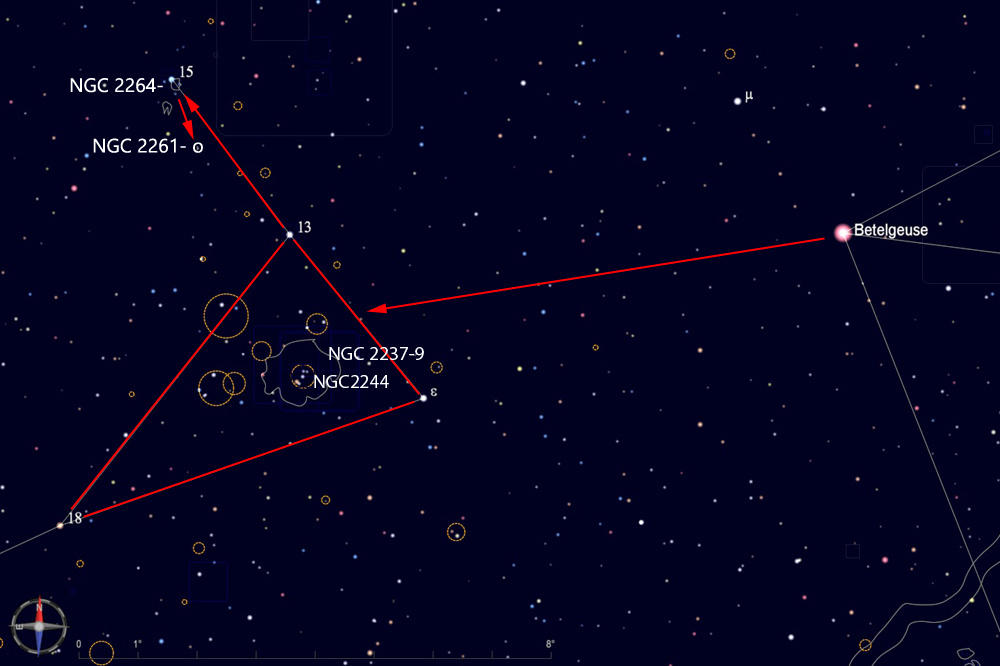
Find the Winter Hexagon, which is composed of six of the brightest stars in the sky--Sirius, Procyon, Pollux, Capella, Aldebaran, and Rigel. On mid-winter evenings, these stars form a large oval stretching from low in the south to nearly overhead. As spring begins, the Winter Hexagon sinks toward the west. The constellation Orion and its bright red star Betelgeuse are inside the Hexagon.

Start from bright red Betelgeuse, and look about 10 degrees to the east for a triangle of three dim (4th magnitude) stars, which are supposed to represent the head and neck area of Monoceros, the unicorn. As shown in the chart below, extend a line from the short edge of this triangle about an equal distance to the northeast, and you will reach 15 Monocerotis, the brightest star in the Christmas Tree Cluster. From there, move a little more than 1 degree to the south-southwest to reach NGC 2261.
